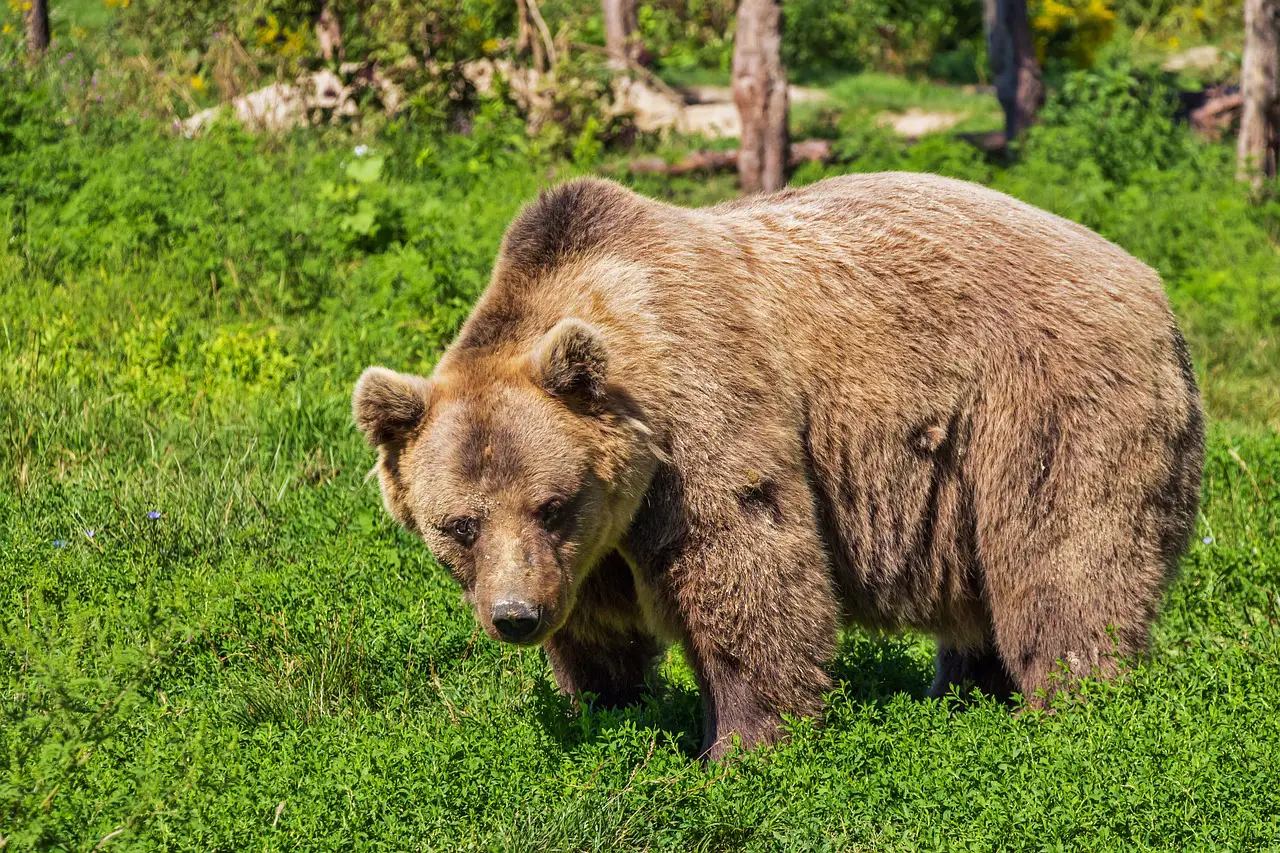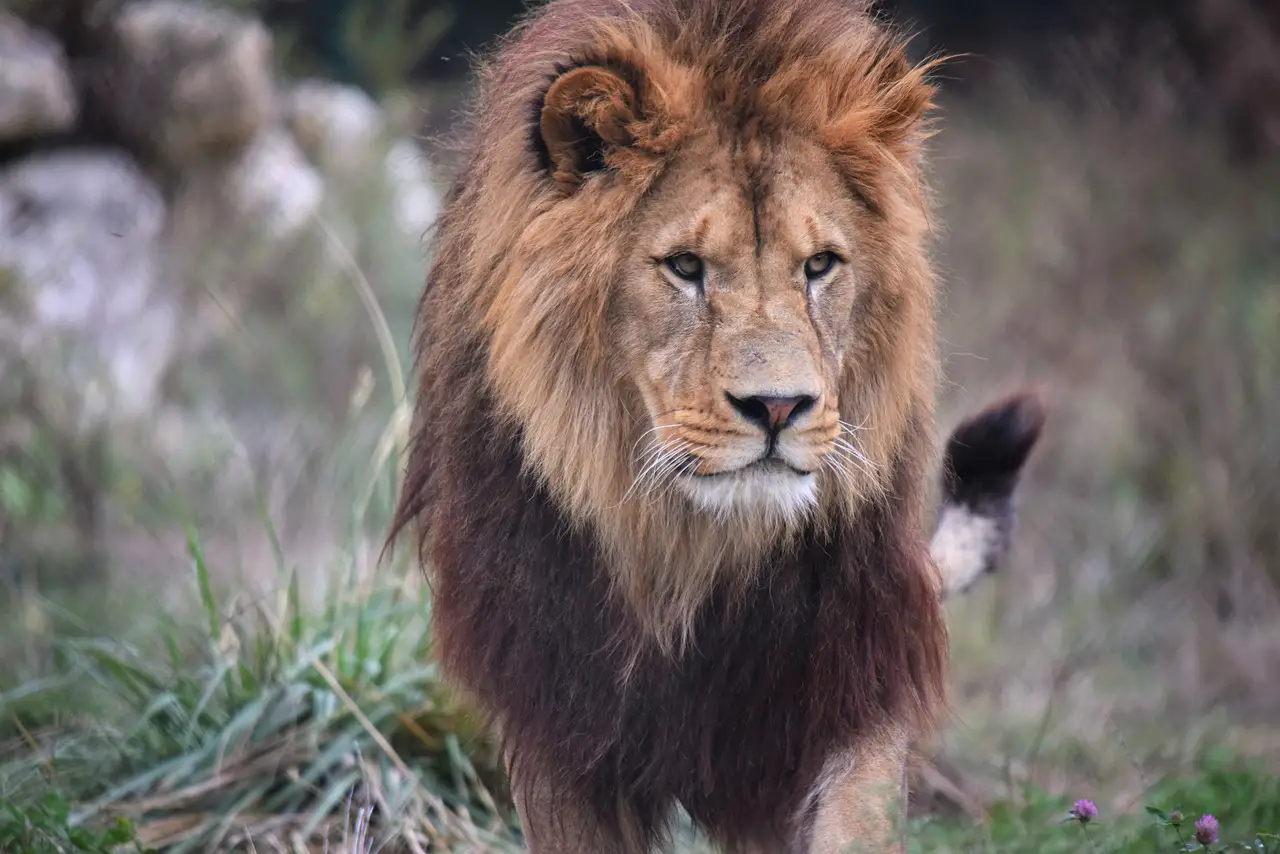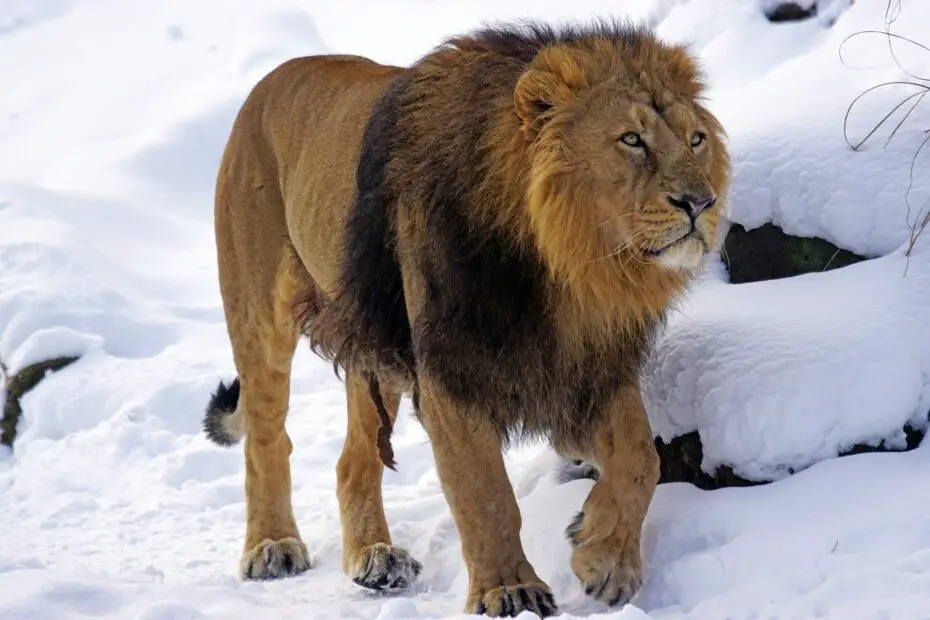The animal kingdom is filled with fascinating creatures, but few captivate our imagination quite like apex predators. Among these, bears and lions stand out as powerful symbols of strength and ferocity. In this article, we delve into the legendary battle of bear vs lion, exploring their physical characteristics, habitats, hunting techniques, and cultural significance.
You may also want to read about bear vs gorilla.
Bear vs Lion: Physical Characteristics
Bears and lions possess unique attributes that contribute to their status as apex predators.
Bear’s Size and Strength
Bears are known for their impressive size and strength. From the massive grizzlies to the agile black bears, these creatures can weigh hundreds or even thousands of pounds. Their muscular build and powerful claws make them formidable adversaries in the wild.

Lion’s Speed and Agility
Lions, on the other hand, are renowned for their speed and agility. With a sleek and muscular body, lions can reach speeds of up to 50 miles per hour in short bursts. Their sharp claws and powerful jaws allow them to take down prey swiftly and efficiently.
Bear vs Lion: Habitat and Distribution
Bears and lions inhabit diverse regions around the world.
Bear’s Diverse Habitats
Bears can be found in various habitats, including forests, mountains, tundras, and even deserts. From the polar bears of the Arctic to the grizzlies of North America, these adaptable creatures have established their presence across a range of ecosystems.
Lion’s Presence in Africa
Lions are primarily found in sub-Saharan Africa, with some populations residing in India’s Gir Forest. These majestic felines roam the savannas and grasslands, forming social prides that are the epitome of strength and unity.
Hunting and Prey
The hunting strategies of bears and lions differ based on their dietary needs and adaptations.
Bear’s Omnivorous Diet
Bears are omnivores, meaning they consume both plants and meat. Their diet consists of berries, fruits, nuts, fish, insects, and occasionally larger prey such as deer. Bears have adapted to different food sources based on their habitat and seasonal availability.
Lion’s Prowess as a Predator
Lions, on the other hand, are apex predators with a preference for meat. They are skilled hunters, relying on teamwork and strategic tactics to bring down large herbivores such as zebras, wildebeests, and buffalo. Their cooperative hunting techniques make them highly efficient predators.
Bear vs Lion: Social Structure
The social structure of bears and lions varies significantly.
Bear’s Solitary Nature
Bears are typically solitary animals, with the exception of females caring for their cubs. They have large home ranges and are known to be more solitary in nature, only interacting with others during the mating season or when competing for resources.
Lion’s Social Pride
Lions, on the other hand, are highly social creatures that form prides consisting of several females, their offspring, and a dominant male or coalition of males. This social structure allows for cooperative hunting, protection of territories, and shared parenting responsibilities.

Bear vs Lion: Defense Mechanisms
Bears and lions possess distinct defense mechanisms to ward off threats.
Bear’s Powerful Claws and Size
Bears rely on their powerful claws, muscular build, and sheer size to defend themselves. Their sharp claws can inflict severe damage, and their imposing presence serves as a deterrent to potential threats.
Lion’s Impressive Mane and Hunting Strategies
Lions have evolved several defense mechanisms, including their iconic manes. The majestic manes not only contribute to their regal appearance but also serve as protection during conflicts with other lions. Additionally, their hunting strategies, which rely on teamwork and coordinated attacks, minimize the risk of injury during confrontations with prey.
Bear vs Lion: Cultural Significance
Throughout history, bears and lions have held significant symbolism and representation in mythology, folklore, and culture.
Symbolism and Representation in Mythology and Folklore
Bears have been revered as symbols of strength, wisdom, and healing in various cultures, including Native American and Scandinavian folklore. Lions, on the other hand, are often associated with royalty, courage, and nobility, earning them a place in heraldry, literature, and religious symbolism.
Case Study: Grizzly Bear
Let’s take a closer look at the mighty grizzly bear, a formidable predator that roams the forests of North America.
Traits and Habitat of the Mighty Grizzly
Grizzly bears are known for their immense size, powerful build, and distinctive shoulder hump. These bears inhabit diverse habitats, ranging from dense forests to open meadows, and have adapted to survive in different climates and food availability.
Case Study: African Lion
Now, let’s shift our focus to the African lion, the iconic king of the savanna.
Unique Features and Behavior of the African Lion
African lions are characterized by their majestic manes, muscular bodies, and impressive roars. These social cats form prides and rely on cooperative hunting to secure their place at the top of the food chain.
Similarities and Differences
While bears and lions share certain traits as apex predators, they also exhibit distinct adaptations and hunting strategies.
Shared Traits and Adaptations
Both bears and lions possess sharp claws, powerful jaws, and acute senses, which are essential for hunting and survival. Their physical attributes reflect their status as apex predators.
Contrasting Hunting Strategies
Bears primarily rely on their strength and opportunistic feeding habits, whereas lions employ cooperative hunting techniques that leverage their speed, agility, and social organization.
Theoretical Battle
Given the hypothetical scenario of a bear versus a lion, speculation about the outcome of such a battle has often intrigued enthusiasts.
Conservation Status
The conservation status of bears and lions reflects the challenges they face in the modern world.
Challenges Facing Bear and Lion Populations
Both bears and lions confront habitat loss, human-wildlife conflict, and illegal hunting. Conservation efforts play a vital role in protecting these iconic species and preserving their natural habitats.
Human Interactions
The interactions between humans and bears or lions can be complex, involving both conflict and conservation efforts.
Human-Wildlife Conflict and Conservation Efforts
Balancing the needs of local communities, wildlife conservation, and responsible tourism is crucial in mitigating human-wildlife conflicts and ensuring the long-term survival of bears and lions.
Conclusion
The battle between bear and lion remains a legendary debate, pitting two apex predators against each other in our imaginations. Both animals embody strength, adaptability, and a deep-rooted connection to the natural world. As we marvel at their power and grace, let us also recognize the importance of conserving these magnificent creatures for future generations to appreciate.
FAQs
Q: Who would win in a fight: a bear or a lion? A: It is difficult to determine the outcome of a hypothetical battle between a bear and a lion as it would depend on various factors, including the species of bear and lion, their size, age, and other circumstances.
Q: Can bears and lions coexist in the same habitat? A: Bears and lions have different habitat preferences and occupy distinct ecological niches. While there may be some overlap, their territories generally do not coincide.
Q: Are bears and lions endangered species? A: Some bear and lion species, such as the polar bear and certain lion populations, are considered vulnerable or endangered due to habitat loss, poaching, and other threats. Conservation efforts are essential to protect their populations.
Q: Are bears and lions related to each other? A: Bears and lions are not closely related. Bears belong to the family Ursidae, while lions are members of the family Felidae.
Q: Can bears and lions be tamed as pets? A: Bears and lions are wild animals and are not suitable or legal to keep as pets in most jurisdictions. It is crucial to respect their natural behaviors and habitats, and appreciate them from a safe distance.
